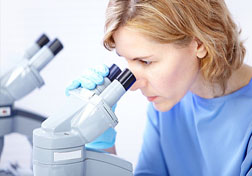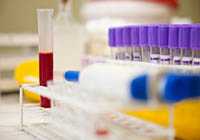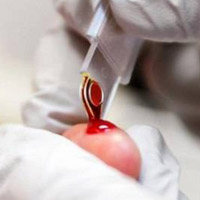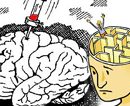Common blood test is one of the most common examination methods. Changes occurring in the blood in most cases are not specific, but indicate the changes occurring in the body.
Content
Common Clinical Blood Analysis - the most common analysis, to take which one person accounted for. Common blood test is widely used as one of the most important methods of examination with most diseases, and in the diagnosis of diseases of the blood formation system - it is given a leading role. Changes in the blood are most often nonspecific, but at the same time reflect changes due to the whole body.
Common blood test includes:
- Study of the quantitative and qualitative composition of blood formation elements (blood cells)
- Determination of the number, sizes, form of red blood cells and the content of hemoglobin
- Determination of hematocrit (ratio of blood plasma and uniform elements)
- Determination of the total number of leukocytes and the percentage ratio of individual forms among them (leukocyte formula)
- Determining the number of thrombocyte
- SEE study
The cell composition of the blood of a healthy person is quite constant. Therefore, various changes in its occurrences may have an important diagnostic value. With some physiological conditions of the body, the qualitative and quantitative composition of blood often changes (pregnancy, menstruation). However, small oscillations occur during the day under the influence of food intake, work and T.NS. To eliminate the influence of these factors, the blood for repeated analyzes should be taken at the same time and under the same conditions.
Special preparation for research is not required. It is recommended to exercise blood for an empty stomach or at least 2 hours after the last meal. Execution term: 1 day.
Only a doctor can completely interpret the general blood test. However, looking at your analysis, you can also have a general idea of your health.
Hemoglobin indicators
Hemoglobin - the main component of the erythrocytes (red blood flows of blood), is a complex protein consisting of gemma (iron-containing) and globin (protein part). The main function of hemoglobin consists in transferring oxygen from the lungs to tissues, as well as in the removal of carbon dioxide (CO2) from the body and regulating the acid-base state.
Physiological forms of hemoglobin:
- Oxygemoglobin (HbO2) - the compound of hemoglobin with oxygen - is formed, mainly in arterial blood and gives it a scarlet color
- Recovered hemoglobin or deoxyhemoglobin (HBH) - hemoglobin that gave oxygen tissues
- Carboxygemoglobin (HBCO2) - a hemoglobin compound with carbon dioxide - is formed, mainly in venous blood, which, as a result, acquires a dark cherry color
Normal agents of hemoglobin in women - 120-140 g / l, in men - 130-160 g / l.
Increased hemoglobin levels cause:
- Diseases accompanied by an increase in the number of erythrocytes (primary and secondary erythrocytosis)
- Blood thickening (dehydration)
- Congenital heart defects, pulmonary heart failure
- Smoking (Education Functionally Inactive HBCO)
- Physiological reasons (residents of high mountains, pilots after high-altitude flights, climbers, after increased physical exertion)
To reduce hemoglobin levels (anemia), lead:
- Increased hemoglobin losses during bleeding - hemorrhagic anemia
- Elevated destruction (hemolysis) of red blood cells - hemolytic anemia
- Lack of iron necessary for the synthesis of hemoglobin, or vitamins involved in the formation of red blood cells (mainly B12, folic acid) - iron deficiency or B12 deficient anemia
- Violation of blood cells for specific hematological diseases - hypoplastic anemia, sickle cell anemia, thalassemia
Erythrocyte indicators in general blood test
Erythrocytes - (red blood calves) - the most numerous uniform elements of blood containing hemoglobin transporting oxygen and carbon dioxide. Are formed from reticulocytes to exit them from bone marrow. Mature erythrocytes do not contain kernels, have a two-way disk. The average lifetime of red blood cells - 120 days.
Normal indicators of erythrocytes of a healthy person depend on the floor, in women - 3.8-5.1, in men - 4.2-5.6.
Improving the level of red blood cells (erythrocytosis) causes:
- Absolute red blood cells (due to increased erythrocyte products) - Eritremia, or vacuise disease - one of the variants of chronic leukemia (primary red blood cell)
- Relative - in combination of blood when the volume of plasma decreases while maintaining the number of erythrocytes
- Dehydration (excess sweating, vomiting, diarrhea, burns, increasing edema and ascite)
- Emotional stress
- alcoholism
- smoking
- Systemic hypertension
To lower the level of erythrocytes (erythrocytopenia), lead:
- Sharp blood loss
- Scarce anemia of different etiology - as a result of iron deficiency, protein, vitamins
- hemolysis
- may occur secondary with different kinds of chronic chichamatologic diseases
The number of erythrocytes can physiologically slightly decreased after meals, in the period between 17.00 and 7.00, as well as when taking blood in the position of lying.
Thrombocyte performance
Platelets (blood plates) - small nuclear-free cells with a diameter of 2-4 μm, the lifespan of which is 7-10 days. In blood vessels, platelets can be located near the walls and in the bloodstream. In a calm state (in the bloodstream) platelets have a disk shape. When the cells are activated, the platelets acquire sphericality and form special increases (pseudo-trimmed). With the help of such growlings, blood plates can stick together with each other or adhere to a damaged vascular wall. Platelets are involved in coagulation processes.
The number of platelets varies depending on the time of day, as well as during the year. The physiological decrease in platelet levels is noted during menstruation (by 25-50%) and during pregnancy, and raising - after exercise. Normal platelet indicators in a healthy person - 150-350.
Raising level (thrombocytosis) causes:
- Primary thrombocytosis (as a result of the proliferation of megacariocytes) - essential thrombocytemy, eritremia
- Secondary thrombocytosis (arising against the background of any disease) - inflammatory processes (systemic inflammatory diseases, osteomyelitis, ulcerative colitis, tuberculosis)
To reduce platelet levels (thrombocytopenia), lead:
- Congenital thrombocytopenia (Viscott-Oldrich syndrome, Chadiak Higashi Syndrome, Fanconi Syndrome, Maya-Hegglin Anomaly, Bernard Sulie Syndrome
- Purified thrombocytopenia - idiopathic autoimmune thrombocytopenic purpura, drug thrombocytopenia, systemic red lupus, tumor metastasis in bone marrow
Sedimentation rate of erythrocytes
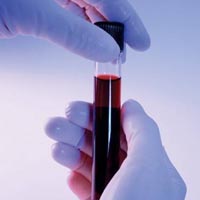 Erythrocyte sedimentation rate (ESO) - blood separation rate in a test tube with added anticoagulant 2 layers: upper (transparent plasma) and lower (axi-rated red blood cells). The erythrocyte sedimentation rate is estimated at the height of the plasma layer formed (in mm) in 1 hour. The specific mass of the erythrocytes is higher than the specific mass of the plasma, so in the tube in the presence of an anticoagulant under the action of gravity of the erythrocytes settle on the bottom.
Erythrocyte sedimentation rate (ESO) - blood separation rate in a test tube with added anticoagulant 2 layers: upper (transparent plasma) and lower (axi-rated red blood cells). The erythrocyte sedimentation rate is estimated at the height of the plasma layer formed (in mm) in 1 hour. The specific mass of the erythrocytes is higher than the specific mass of the plasma, so in the tube in the presence of an anticoagulant under the action of gravity of the erythrocytes settle on the bottom.
The number, shape and size of erythrocytes affect the settlement. Reducing the content of erythrocytes (anemia) in the blood leads to the acceleration of ESP and, on the contrary, the increase in the content of erythrocytes in the blood slows down the sedimentation rate (sedimentation).
With acute inflammatory and infectious processes, the change in the rate of sedimentation of the erythrocytes is observed 24 hours after increasing the temperature and increase the number of leukocytes.
EXACTOR EXAMPLICATION Changes depending on the set of physiological and pathological factors. SE values in women are somewhat higher than that of men. Changes in the protein composition of blood during pregnancy lead to an increase in ESO during this period. During the day, it is possible to fluctuate the values, the maximum level is marked in the daytime.
Normal SE indicators in a healthy person depend on the floor, in women - 0-20 mm / h, in men - 0-15.
The increase (acceleration) of the ESP occurs in inflammatory diseases, autoimmune diseases, kidney diseases, myocardial infarction, injuries and fractures.
SE deceleration is observed in Eritremia, congenital phenomena of insufficiency of blood circulation, epilepsy, starvation, reduced muscle mass, pregnancy, vegetarian diet.



